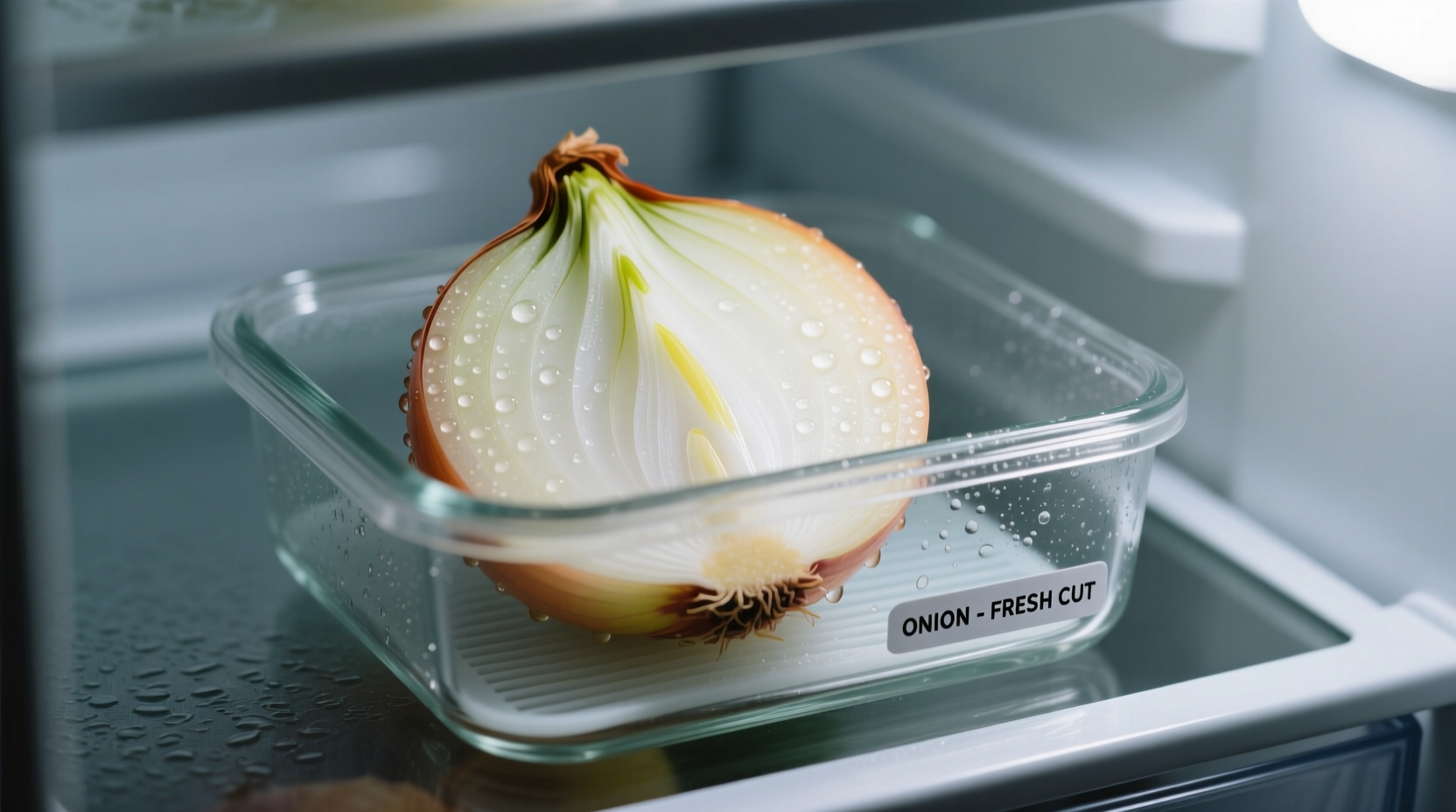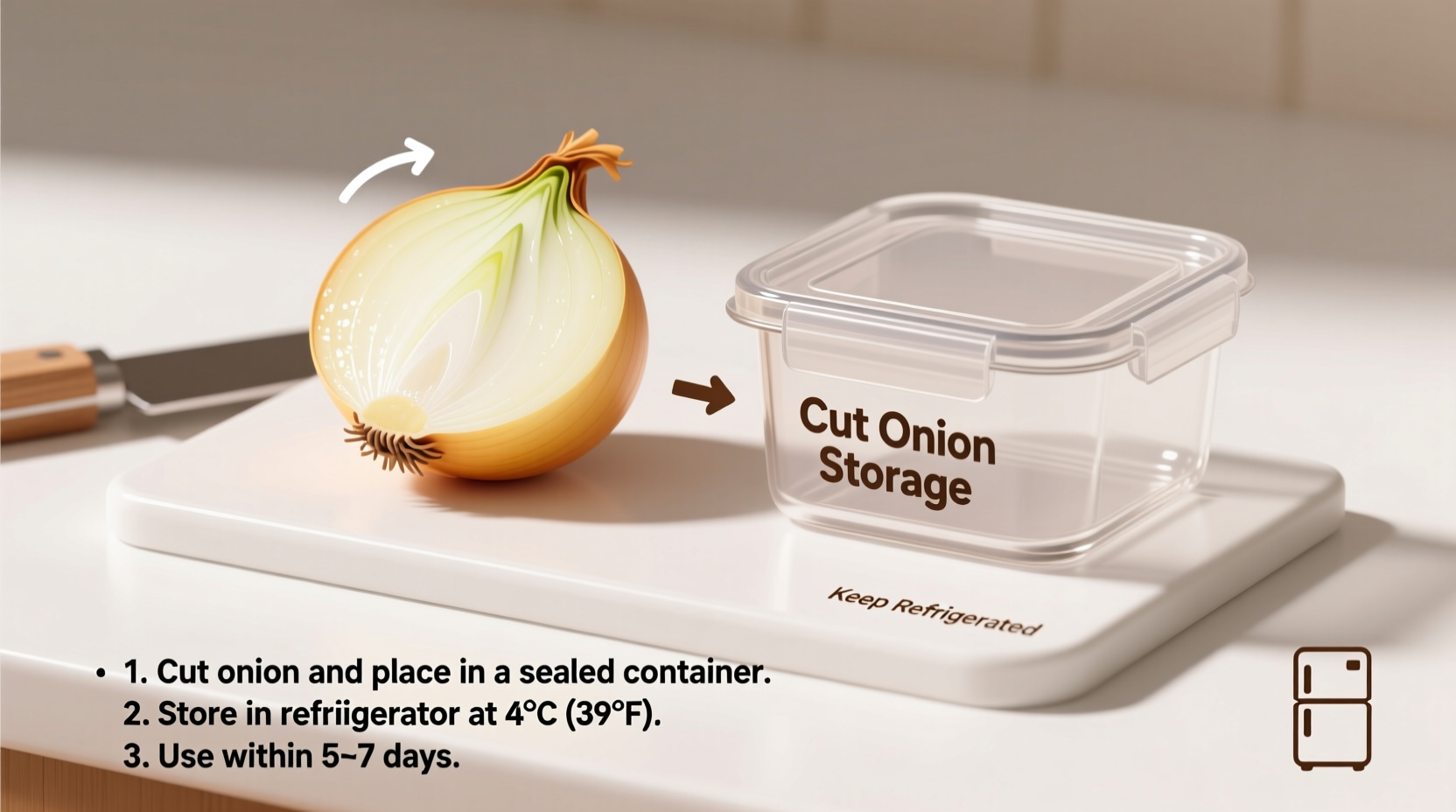Nothing ruins meal prep like discovering your half-used onion has turned slimy or developed an off-flavor. Proper storage extends freshness while maintaining that sharp, clean taste essential for salsas, salads, and cooked dishes. As a professional chef who's managed restaurant kitchens for over 15 years, I've tested every onion storage method imaginable—here's exactly what works based on food science and practical experience.
Why Proper Onion Storage Matters
Onions begin deteriorating the moment you cut them. The exposed flesh reacts with oxygen through enzymatic browning, while moisture loss leads to texture changes. According to USDA food safety guidelines, cut produce enters the "temperature danger zone" above 40°F where bacteria multiply rapidly. Proper storage isn't just about convenience—it's critical for food safety and flavor preservation.
Immediate Post-Cutting Protocol (First 30 Minutes)
The first half-hour after cutting determines your onion's entire shelf life. Follow these steps immediately after slicing:
- Dry thoroughly—pat cut surfaces with paper towels to remove excess moisture (wet onions spoil faster)
- Remove root end completely—this area contains more moisture and spoils first
- Avoid metal containers—onion compounds react with metal, accelerating spoilage
- Work quickly—limit air exposure time during preparation
Short-Term Storage: 1-3 Days
For onions you'll use within three days, follow this simple refrigerator method:
- Place cut onion in a clean, dry glass container with an airtight lid
- Press plastic wrap directly against the onion surface before sealing
- Store in the main refrigerator compartment (not the door)
- Maintain temperature at 35-38°F (1.7-3.3°C)
This method works because glass doesn't absorb odors like plastic, and direct contact with plastic wrap minimizes air exposure. The University of California Davis Postharvest Technology Center confirms that reduced oxygen exposure significantly slows enzymatic browning in alliums.

Medium-Term Storage: 4-7 Days
Extend freshness up to a week with this chef-recommended technique:
- Use a vacuum-sealed container or remove excess air from storage bags
- Add a paper towel to absorb moisture (replace daily)
- Store away from ethylene-producing fruits like apples and bananas
- Keep in the vegetable crisper drawer at 90-95% humidity
Research from the Journal of Food Science shows that modified atmosphere packaging (reducing oxygen levels) maintains onion quality significantly better than standard storage. While home cooks can't replicate commercial vacuum systems, minimizing air exposure achieves similar benefits.
Long-Term Storage: Up to 14 Days
Professional kitchens use this method for maximum shelf life:
- Cut onions into uniform pieces (consistency prevents uneven spoilage)
- Place in a glass container with 1-2 tablespoons of cold water
- Cover completely with plastic wrap pressed against the surface
- Seal with airtight lid and store at consistent refrigerator temperature
This technique creates a micro-hydroponic environment that maintains moisture balance. The National Onion Association verifies this method preserves cellular structure better than dry storage, though flavor becomes slightly milder after 10 days.
Freezing Cut Onions for Extended Use
For meal preppers and bulk cooks, freezing preserves onions for up to 6 months:
- Slice or dice onions uniformly
- Spread in single layer on parchment-lined baking sheet
- Flash freeze for 2 hours before transferring to freezer bags
- Remove as much air as possible from bags
- Label with date and use within 6 months
Freezing changes texture (making onions unsuitable for raw applications) but preserves flavor perfectly for cooked dishes. The FDA confirms frozen vegetables remain safe indefinitely at 0°F, though quality peaks within 6 months.
How to Tell If Your Stored Onion Has Spoiled
Don't risk foodborne illness—discard onions showing any of these signs:
| Condition | Fresh Onion | Spoiled Onion |
|---|---|---|
| Appearance | Crisp, uniform color | Dark spots, slimy film, excessive browning |
| Smell | Sharp, clean aroma | Sour, fermented, or ammonia-like odor |
| Texture | Firm, slightly moist | Excessively soft, mushy, or slimy |
The USDA Food Safety and Inspection Service emphasizes that when in doubt, throw it out—onion spoilage can harbor pathogens that aren't always detectable by sight or smell.
Common Onion Storage Mistakes
Avoid these frequent errors that compromise onion quality:
- Storing at room temperature—cut onions must be refrigerated within 2 hours
- Using plastic bags without air removal—traps moisture causing faster spoilage
- Leaving cut onions in metal bowls—causes flavor degradation through oxidation
- Storing near strong-smelling foods—onions readily absorb surrounding odors
- Washing before storage—adds excess moisture that accelerates decay
Onion Storage Method Comparison
| Storage Method | Max Duration | Best For | Flavor Preservation |
|---|---|---|---|
| Refrigerator (glass container) | 7 days | Raw applications | Excellent |
| Refrigerator (plastic container) | 5 days | Cooked dishes | Good |
| Water method | 14 days | Salads, salsas | Very Good |
| Freezing | 6 months | Cooked dishes only | Good (texture changes) |
Special Considerations for Different Onion Types
Not all onions store the same—adjust your method based on variety:
- Yellow onions—most durable, follow standard storage methods
- Red onions—more moisture, use water method for best results
- White onions—most delicate, consume within 5 days maximum
- Shallots—store like yellow onions but with shorter shelf life
- Green onions—store roots in water, change water every 2 days
The National Onion Association notes that red onions contain higher anthocyanin levels which react differently to storage conditions, explaining their faster color changes compared to yellow varieties.
Practical Storage Tips for Real Kitchens
Implement these field-tested strategies in your daily routine:
- Store cut onions in the front of your refrigerator where temperature is most consistent
- Use clear containers so you can see contents without opening
- Label containers with preparation date using masking tape
- Keep a dedicated onion container to prevent cross-contamination
- Store half an onion with the root end intact for maximum freshness
Professional chefs consistently report that maintaining consistent refrigerator temperature is more critical than the container type—fluctuations above 40°F accelerate spoilage regardless of other precautions.











 浙公网安备
33010002000092号
浙公网安备
33010002000092号 浙B2-20120091-4
浙B2-20120091-4